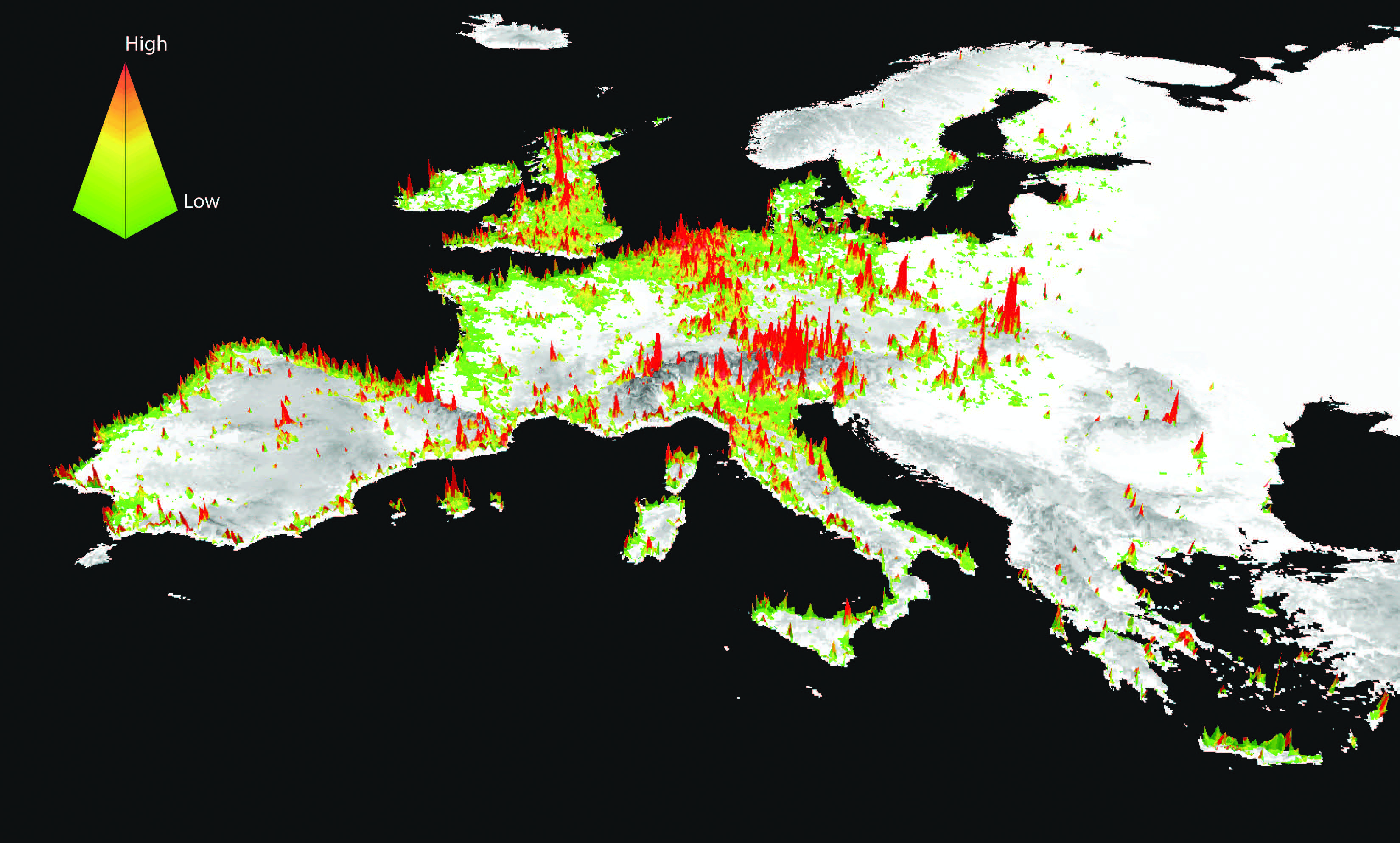Social Media Photos Priceless for Natural Resources Research

For Immediate Release
Tapping into social media posts on Instagram, Flickr and Panoramio gave North Carolina State University researchers a trove of information about people’s opinions of scenic European landscapes. A new study in Proceedings of the National Academy of Sciences shows that geotagged photos – complete with millions of comments – can provide data for predictive models to help guide land use policy, conservation planning and development decisions worldwide.
“Social media offer the possibility of transforming the way researchers collect data on how we perceive and value the environment around us,” says Derek van Berkel, a postdoctoral researcher with NC State’s Center for Geospatial Analytics and co-lead author of the study. “Crowdsourced information provides an exciting alternative to small-scale social surveys, which are expensive and laborious to administer.”
The research comes as land use in Europe and worldwide continues to shift because of urbanization. Land devoted to agriculture, mining and forestry may be managed for recreation, leisure activities and tourism instead, van Berkel says.
Crowdsourced predictive models could help residents of the Swiss Alps make decisions about whether mountain meadows are best suited for grazing cattle, suburban housing or a new ski resort. French residents could choose between allowing large-scale agricultural production or investing in preserving traditional hedgerows around fields because of their beauty and environmental value as habitat for birds and pollinating insects.
“We found that Panoramio, Instagram and Flickr provided comparable data that was reliable as an indicator of which landscapes visitors value most on a continental scale,” van Berkel says. “It’s difficult to put a numerical value on beauty and inspiration, but policymakers need to know which locations have aesthetic and cultural worth so that they can develop strategies to preserve those landscapes and think in terms of amenity-driven visitors and agricultural tourism to boost local economies.”
Researchers created algorithms to filter data from Instagram and Panoramio, which are widely used across Europe, and Flickr, which is more common in Central and Western Europe. They mapped the geographic distribution of images in Europe and ranked sites into four quartiles, from most- to least-visited locations. In analyzing visitor patterns, researchers found the most-valued landscapes included mountainous areas, locations near rivers and lakes, and areas near population centers.
“These landscapes are clearly providing ecosystem services highly valued by society,” says Ross Meentemeyer, director of NC State’s Center for Geospatial Analytics and a co-author of the study. “Using social media to uncover and quantify people’s interest in ecosystem services is an exciting new approach to understanding the important connection between natural resources and human health and well-being.”
Instagram, a mobile app for photo sharing, offered a particularly rich source of data for the study because it allows users to attach comments and hashtags to their photos. Photo-sharing data provides a snapshot of the values of millennials, a key demographic group for future land use decisions, van Berkel says.
“Geospatial analytics allows us to study how urbanization changes the landscape and to predict the consequences of those changes,” van Berkel says. “Our goal is to model what will happen in different scenarios – something like what you’d see in Sim City – but using a computer model driven by real data about real places.”
-ford-
Note to editors: An abstract of the paper follows.
Continental scale quantification of landscape values using social media data
Authors: Boris T. van Zanten, VU University Amsterdam, and Derek B. van Berkel, North Carolina State University, lead co-authors; Ross K. Meentemeyer, NC State University; Jordan W. Smith, Utah State University; Koen F. Tieskens and Peter H. Verburg, VU University Amsterdam.
Published: Oct. 31, 2016, in Proceedings of the National Academy of Sciences
Abstract: Individuals, communities and societies ascribe a diverse array of values to landscapes. These values are shaped by the aesthetic, cultural and recreational benefits and services provided by those landscapes. However, across the globe, processes such as urbanization, agricultural intensification and abandonment are threatening landscape integrity, altering the personally meaningful connections people have towards specific places. Existing methods used to study landscape values, such as social surveys, are poorly suited to capture dynamic landscape-scale processes across large geographic extents. Social media data, by comparison, can be used to indirectly measure and identify valuable features of landscapes at a regional, continental and perhaps even worldwide scale. We evaluate the usefulness of different social media platforms – Panoramio, Flickr and Instagram – and quantify landscape values at a continental scale. We find Panoramio, Flickr and Instagram data can be used to quantify landscape values, with features of Instagram being especially suitable due to its relatively large population of users and its functional ability of allowing users to attach personally meaningful comments and hashtags to their uploaded images. Although Panoramio, Flickr and Instagram have different user profiles, our analysis revealed similar patterns of landscape values across Europe across the three platforms We also found variables describing accessibility, population density, income, mountainous terrain or proximity to water explained a significant portion of observed variation across data from the different platforms. Social media data can be sued to extend our understanding of how and where individuals ascribe value to landscapes across diverse social, political and ecological boundaries.
- Categories:


